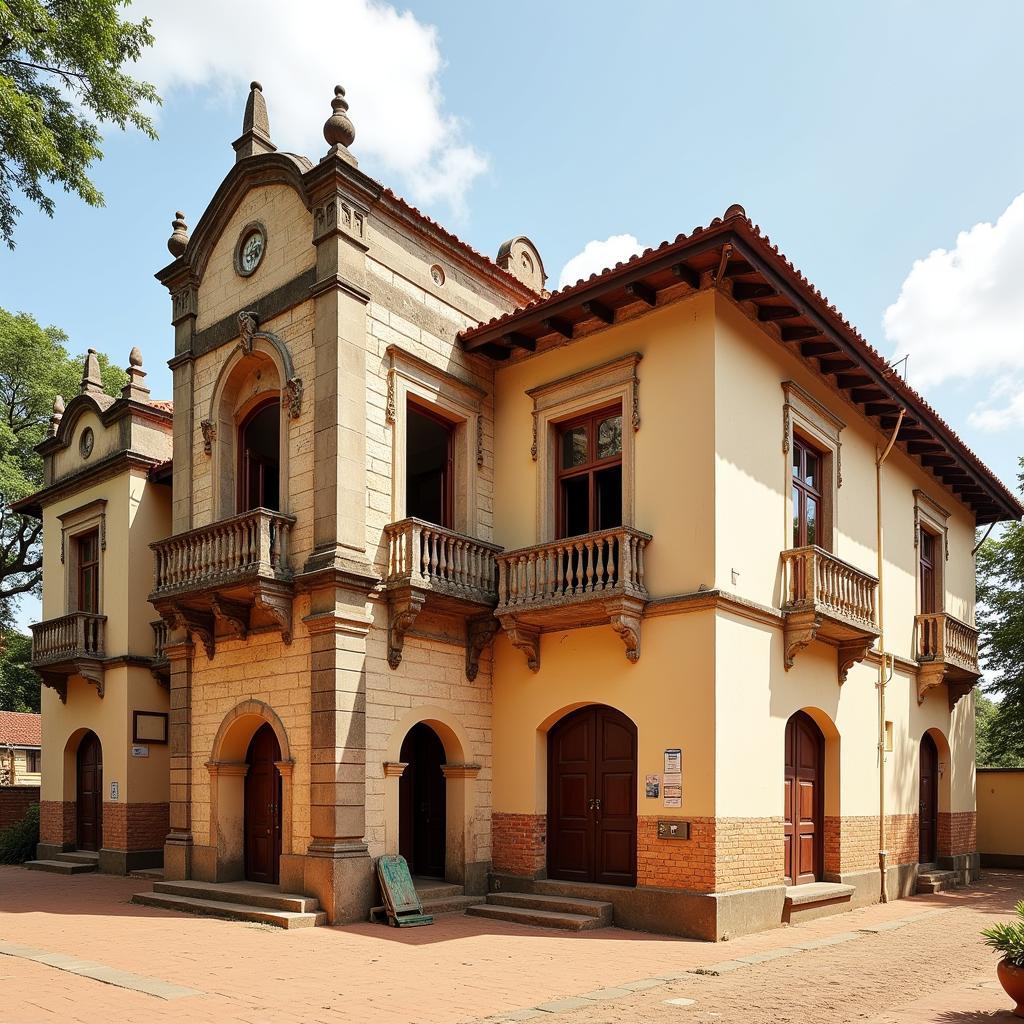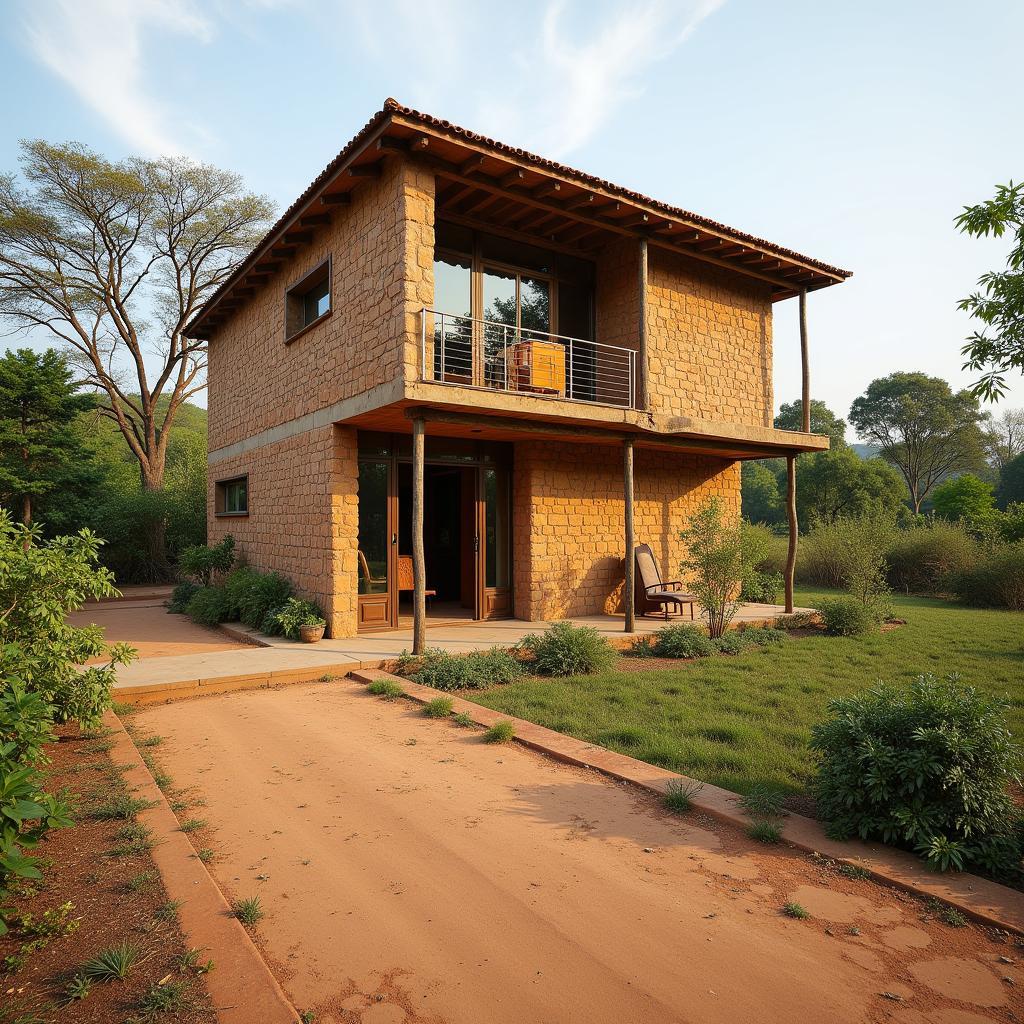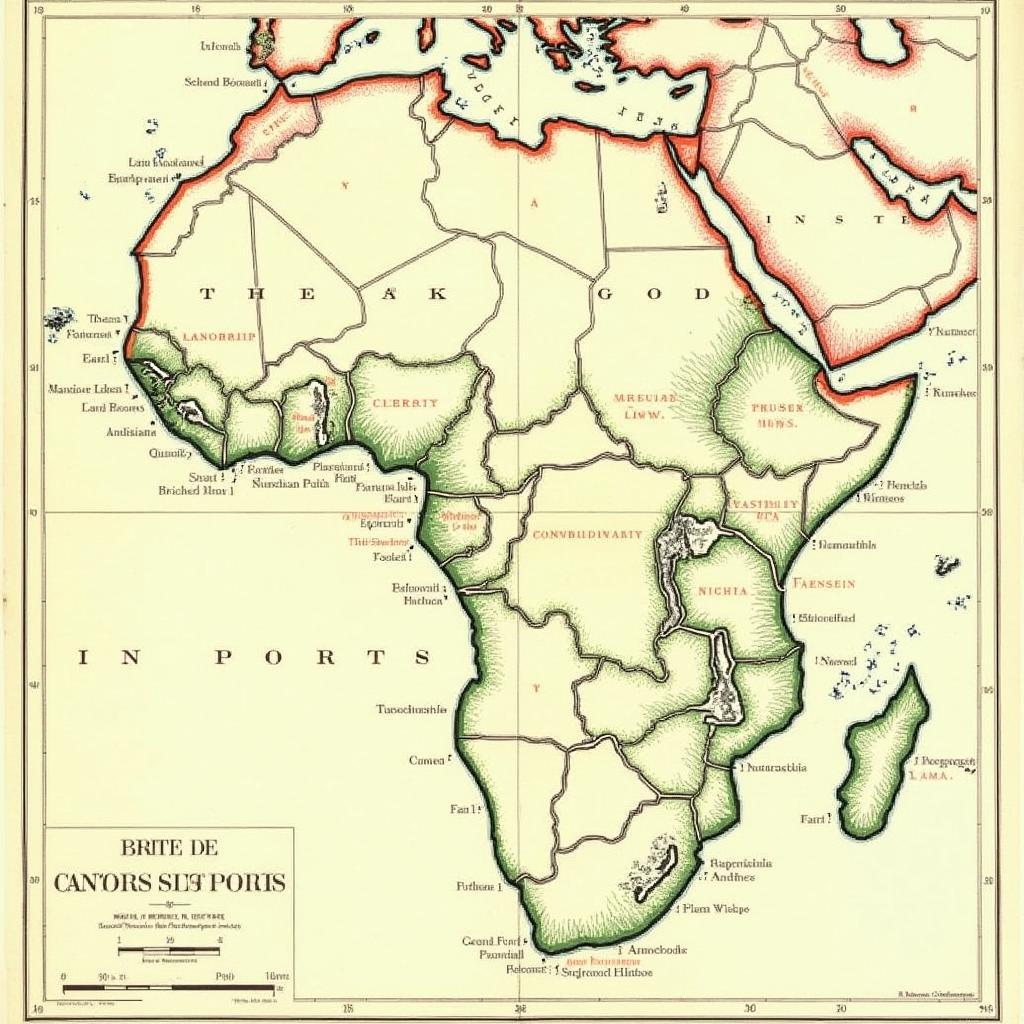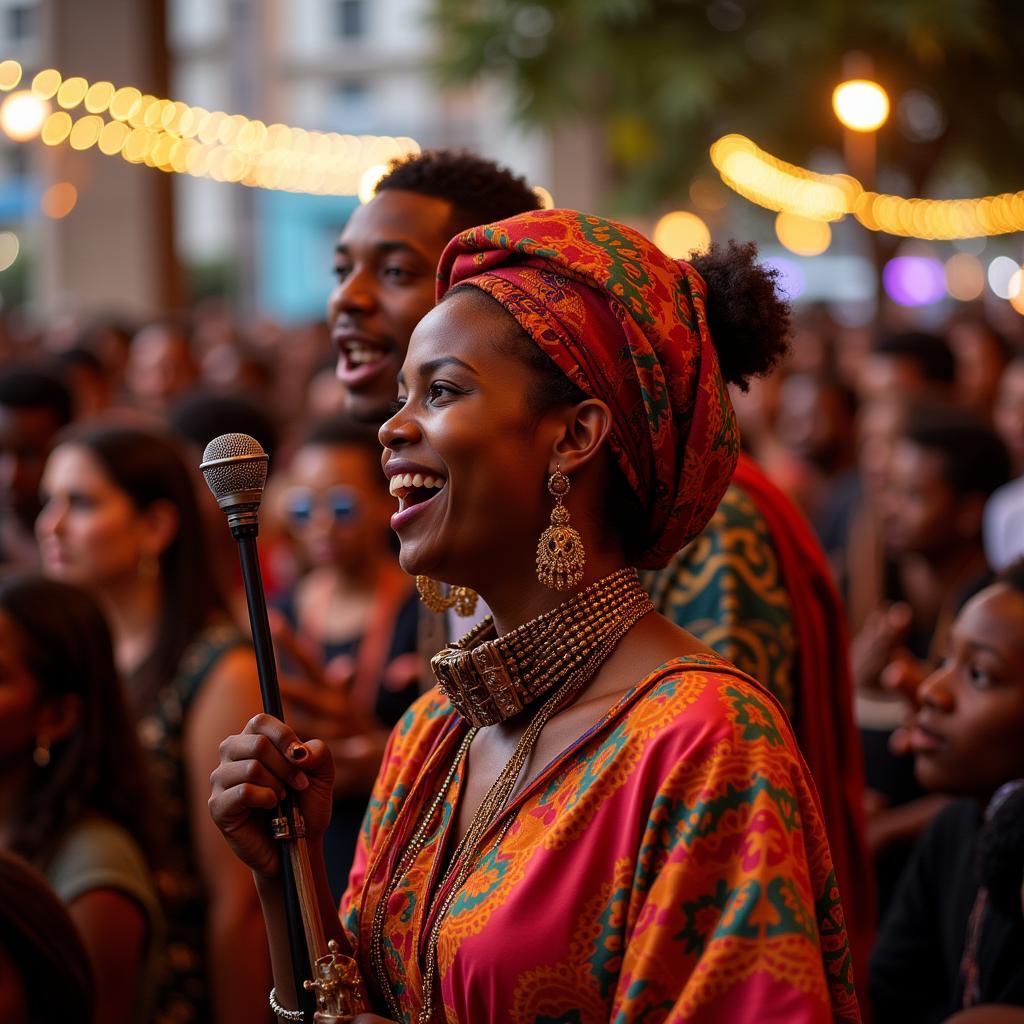Exploring the Diverse World of African Buildings
African Buildings represent a vibrant tapestry of architectural styles, reflecting the continent’s rich history, diverse cultures, and ingenious adaptations to the environment. From ancient monuments to modern skyscrapers, these structures tell stories of innovation, resilience, and cultural identity. This exploration delves into the fascinating world of African architecture, highlighting its unique characteristics and regional variations.
After centuries of relying on imported architectural concepts, there’s a burgeoning movement to rediscover and revive traditional African building methods. This shift isn’t simply about nostalgia; it represents a practical response to environmental challenges and a renewed focus on sustainability. See more about African design on african design.
Ancient Wonders and Historical Landmarks
Ancient African buildings showcase the ingenuity and architectural prowess of past civilizations. The pyramids of Egypt, while iconic, are just one example. Ethiopia’s rock-hewn churches of Lalibela, carved directly into the mountainside, are a testament to religious devotion and architectural skill. Across the continent, remnants of ancient cities and trading centers reveal complex urban planning and sophisticated building techniques. Great Zimbabwe, with its impressive stone walls, stands as a powerful symbol of a thriving medieval kingdom.
These historical landmarks offer valuable insights into the social, political, and economic structures of ancient African societies. They also demonstrate the use of locally sourced materials and adaptation to specific climatic conditions. The Nubian pyramids of Sudan, smaller and steeper than their Egyptian counterparts, reflect distinct cultural traditions and architectural styles.
 Ancient Nubian Pyramids in Sudan: A testament to unique architectural traditions
Ancient Nubian Pyramids in Sudan: A testament to unique architectural traditions
Vernacular Architecture: Embracing Local Materials and Traditions
Vernacular architecture, often overlooked, forms the backbone of African building traditions. These structures, built by local communities using readily available materials and traditional techniques, reflect a deep understanding of the environment and cultural practices. Mud-brick houses, common in many parts of Africa, offer excellent insulation against extreme temperatures. Thatched roofs provide protection from rain and sun while allowing for natural ventilation. You can find more information on african countries and their capital towns.
What are the benefits of vernacular architecture? It’s sustainable, cost-effective, and culturally significant. These buildings utilize local resources, minimizing environmental impact and promoting self-sufficiency. They also embody the cultural values and aesthetic preferences of the communities that create them.
The Influence of Colonization on African Buildings
Colonialism significantly impacted African architecture, introducing European styles and building practices that often clashed with existing traditions. Many colonial-era buildings, such as administrative offices and churches, were designed in European styles, reflecting the power dynamics of the time. However, hybrid architectural forms also emerged, blending European and African elements. For more insights on government in African nations, you might find the african government facts helpful.
How did colonization affect traditional African architecture? It often led to the marginalization of local building practices and the adoption of foreign materials and techniques. This disruption had long-lasting consequences, impacting urban planning and architectural development across the continent.
 Colonial Architecture: A Blend of African and European Styles
Colonial Architecture: A Blend of African and European Styles
Modern African Architecture: A Fusion of Tradition and Innovation
Contemporary African architecture is witnessing a resurgence of interest in traditional building methods and materials. Architects are increasingly incorporating sustainable practices and local knowledge into their designs. This renewed focus on local traditions doesn’t preclude innovation. Modern African buildings often combine traditional elements with contemporary design principles, creating unique and culturally relevant structures.
What are some examples of modern African architecture? The Zeitz MOCAA in Cape Town, South Africa, repurposed a historic grain silo into a stunning museum of contemporary African art. Across the continent, architects are exploring innovative ways to use local materials like bamboo and compressed earth blocks to create sustainable and aesthetically pleasing buildings. Want to know more about African currencies? Check out this resource on african countries capital and currency pdf.
Preserving African Architectural Heritage for Future Generations
Preserving African architectural heritage is crucial for maintaining cultural identity and understanding the continent’s rich history. Many historic buildings face threats from neglect, environmental degradation, and rapid urbanization. Efforts to document, restore, and protect these structures are vital for ensuring their continued existence.
Why is preserving African architectural heritage important? It provides valuable insights into the past and inspires future generations of architects and designers. By safeguarding these historical treasures, we can learn from the ingenuity of our ancestors and ensure that their stories continue to be told.
 Modern African Architecture: Sustainable Design
Modern African Architecture: Sustainable Design
In conclusion, African buildings are a testament to the continent’s diverse cultures, innovative spirit, and enduring connection to the environment. From ancient monuments to modern masterpieces, these structures offer valuable insights into the past and inspire future architectural endeavors. By appreciating and preserving this rich architectural heritage, we can ensure that the stories embedded within African buildings continue to enrich our understanding of the continent for generations to come. You can find information regarding corporate cleaning services in Africa via african corporate cleaning.
FAQ
-
What are some examples of ancient African buildings? Examples include the pyramids of Egypt, the rock-hewn churches of Lalibela, and Great Zimbabwe.
-
What is vernacular architecture? Vernacular architecture refers to traditional building methods and materials used by local communities.
-
How did colonialism impact African buildings? Colonialism introduced European architectural styles and often marginalized local building practices.
-
What are some trends in modern African architecture? Modern African architecture often incorporates sustainable practices and local materials while embracing innovation.
-
Why is preserving African architectural heritage important? Preservation helps maintain cultural identity, provides historical insights, and inspires future architects.
-
What materials are commonly used in traditional African buildings? Materials like mud-brick, thatch, and timber are commonly used.
-
How does African architecture adapt to the environment? African buildings often feature design elements that provide natural ventilation and insulation against extreme temperatures.
Need further assistance? Contact us at:
Phone: +255768904061
Email: kaka.mag@gmail.com
Address: Mbarali DC Mawindi, Kangaga, Tanzania.
We have a 24/7 customer service team ready to help.


